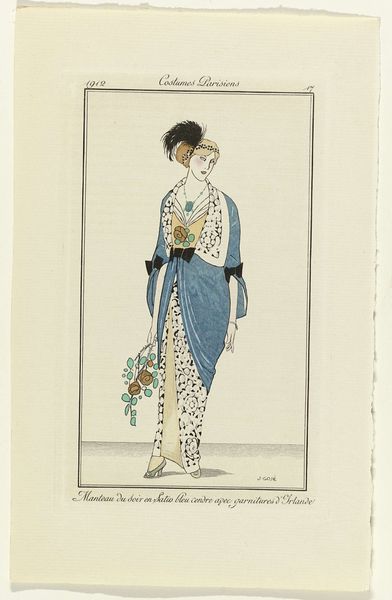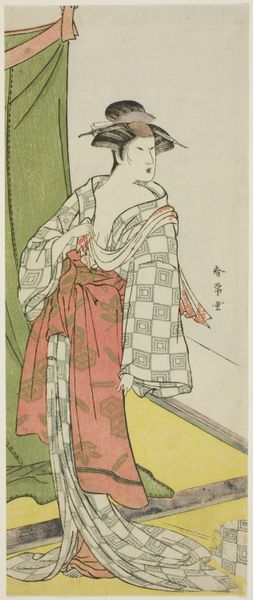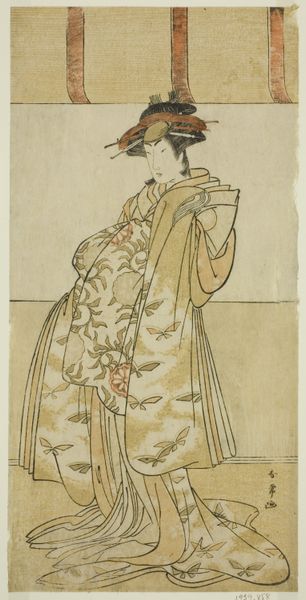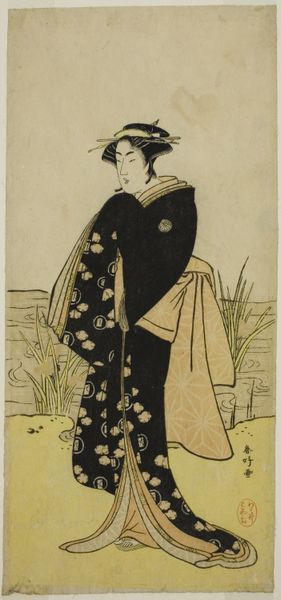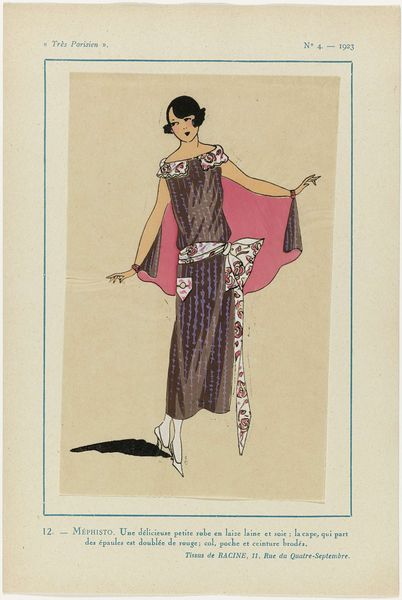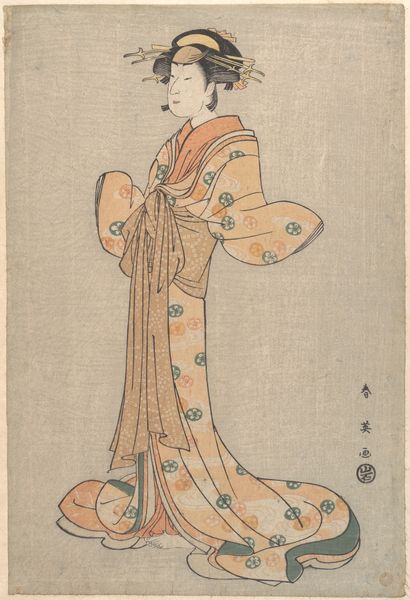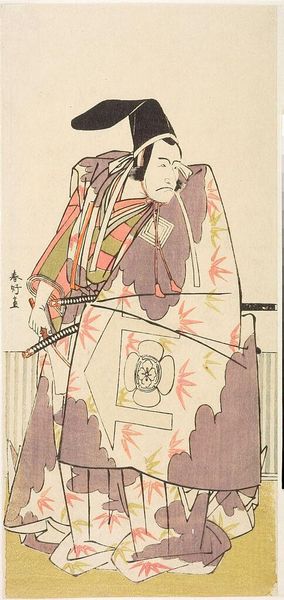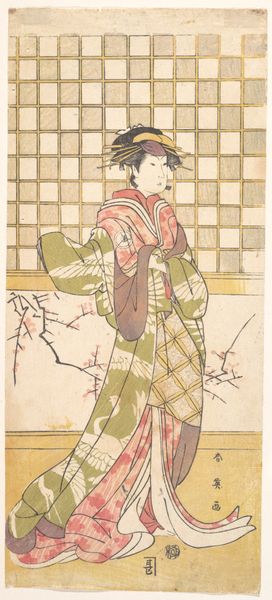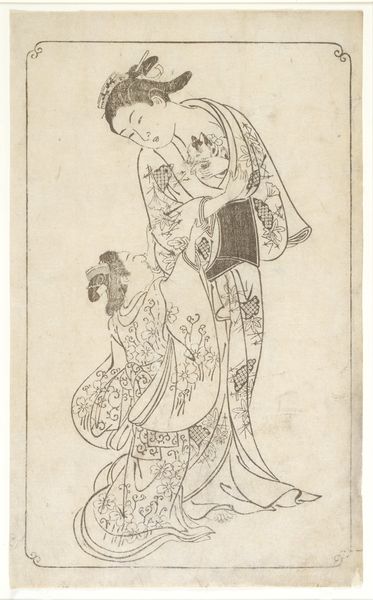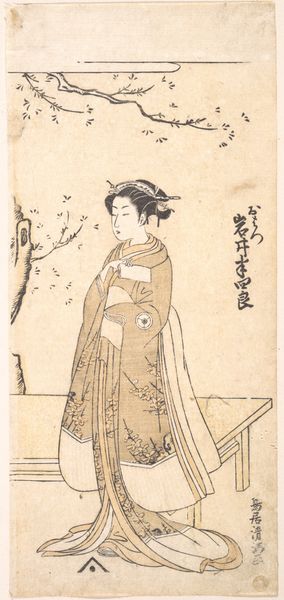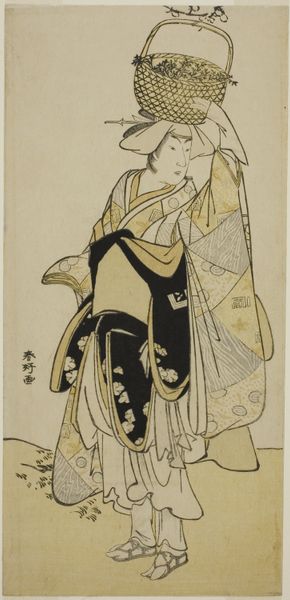
Gazette du Bon Ton, 1920 - No. 10, Pl. 75: Hésitation / Déshabillé, de Beer 1920
0:00
0:00
#
imaginative character sketch
#
aged paper
#
light pencil work
#
retro 'vintage design
#
personal sketchbook
#
historical fashion
#
sketchbook drawing
#
watercolour illustration
#
sketchbook art
#
dress
#
watercolor
Dimensions: height 251 mm, width 196 mm
Copyright: Rijks Museum: Open Domain
Editor: Here we have Charles Martin's "Hésitation / Déshabillé, de Beer," plate 75 from the Gazette du Bon Ton, created in 1920. The watercolour illustration features a stylish woman in a lilac floral robe. It feels very much of its time, capturing that Art Deco aesthetic. What strikes you most about this piece? Curator: I’m immediately drawn to the context of "Gazette du Bon Ton." It was a prominent French fashion magazine, acting as a significant force in shaping and disseminating tastes of the elite after World War I. Knowing it aimed at an upper-class readership really colors my view. Does this feel more like advertisement or fine art to you? Editor: Good question. It feels… both? It's beautiful but also definitely selling something, or at least an aspiration. It’s interesting how fashion functioned then as both commodity and artistic expression. Curator: Precisely. Consider also the de Beer label – what was the socio-economic impact of a luxury brand like that, catering to a specific demographic while potentially reinforcing class divisions? We need to acknowledge the political nature of taste. The image subtly reinforces certain standards and privileges. Do you see a sense of luxury conveyed effectively in the drawing? Editor: Yes, in the fluidity of the robe, the detailing, even the woman’s pose exudes leisure and wealth. I hadn’t fully considered the social commentary aspect initially, but now I see the piece functions on more than just an aesthetic level. Curator: It's important to recognize that art doesn’t exist in a vacuum. Fashion, especially, serves as a mirror reflecting society's values and structures. Understanding this interplay reveals layers of meaning. Editor: That’s a really valuable point. I’ll definitely look at fashion illustrations differently now. Thanks for highlighting that cultural context.
Comments
No comments
Be the first to comment and join the conversation on the ultimate creative platform.
